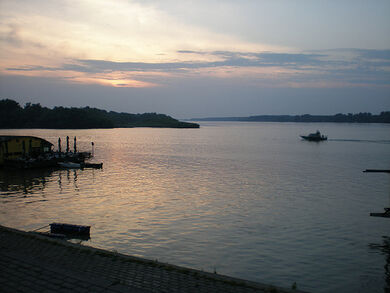
Serbia, officially the Republic of Serbia (Serbian: Република Србија or Republika Srbija, pronounced [republika sr̩bija]), is a landlocked country located at the crossroads of Central and Southeast Europe, covering the southern part of the Carpathian basin and the central part of the Balkans. Serbia borders Hungary to the north; Romania and Bulgaria to the east; the Republic of Macedonia to the south; and Croatia, Bosnia and Herzegovina, and Montenegro to the west; additionally, it borders Albania through Kosovo, whose status as part of Serbia is disputed.
Places, projects and networks[]
The capital of Serbia, Belgrade, is among the largest cities in Southeast Europe.
Diary international 2011[]
November
- 14 - 16 International Environmental Film Festival, Serbia, Mon - Wed
Topic links[]
The headings in this section provide links to some of the topics in the Ideas Bank. Click on the Ideas Bank link, or the category listing to see a full list of topics.
Waterways Although landlocked, there are around 2000 km of navigable rivers and canals, the largest of which are: the Danube, Sava, Tisa, joined by the Timiş River and Begej, all of which connect Serbia with Northern and Western Europe through the Rhine–Main–Danube Canal and North Sea route, to Eastern Europe via the Tisa, Timiş, Begej and Danube Black Sea routes, and to Southern Europe via the Sava river. The two largest Serbian cities – Belgrade and Novi Sad, as well as Smederevo – are major regional Danubian harbours.[134] The Danube River, central Europe's connection to the Black Sea, flows through Serbia. Through Danube-Rhine-Main canal the North Sea is also accessible. Tisza river offers a connection with Eastern Europe while the Sava river connects her to western former Yugoslav republics near the Adriatic Sea.
| This page uses Creative Commons Licensed content from Wikipedia (view authors). |